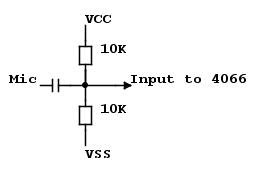Combinu
Newbie level 6
Hi, I am going to use the HCF4066BE IC.. This is a QUAD BILATERAL SWITCH FOR TRANSMISSION OR
MULTIPLEXING OF ANALOG OR DIGITAL SIGNALS.
The datasheet is over here: http://www.datasheetcatalog.org/datasheets/90/206772_DS.pdf
This type of IC does not work like a normal IC with pins 8, 16 connected to GND and VCC respectively, but it connects to VSS and VDD.
VDD is ok since it gets the normal +5V but VSS must have -5V so that the IC works. I tested and it does work only with these condition.
My problem is i am going to make a board and the only supply i have is +5V and GND (i am going to get them from the arduino). So is there any way that from this supply i get -5V too.
Its not a problem if i have to build another small circuit, but i don't need to introduce another outer supply. The only thing i need is a setup that from 5V i get -5V.
Please be basic in you explanation since i am a beginner.
Thanks and Regards
Combinu
MULTIPLEXING OF ANALOG OR DIGITAL SIGNALS.
The datasheet is over here: http://www.datasheetcatalog.org/datasheets/90/206772_DS.pdf
This type of IC does not work like a normal IC with pins 8, 16 connected to GND and VCC respectively, but it connects to VSS and VDD.
VDD is ok since it gets the normal +5V but VSS must have -5V so that the IC works. I tested and it does work only with these condition.
My problem is i am going to make a board and the only supply i have is +5V and GND (i am going to get them from the arduino). So is there any way that from this supply i get -5V too.
Its not a problem if i have to build another small circuit, but i don't need to introduce another outer supply. The only thing i need is a setup that from 5V i get -5V.
Please be basic in you explanation since i am a beginner.
Thanks and Regards
Combinu

